Abstract
OBJECTIVE: To evaluate an enriched prenatal intervention program designed to reduce the risk of low birth weight. STUDY SETTING: Freestanding community-based prenatal intervention project located in a poor inner-city community, serving mostly African American women. STUDY DESIGN: All women less than 29 weeks pregnant were eligible to participate. They were compared to women who lived in neighborhoods with similar rates of poverty. DATA COLLECTION: The birth certificate was the source of data on maternal age, education, marital status, timing and frequency of prenatal care attendance, parity, gravidity, prior pregnancy terminations, fetal and child deaths, and birth weight. PRINCIPAL FINDINGS: Thirty-eight percent of the women who delivered live-born infants in the study area participated in the program. There were no differences in low- and very low birthweight rates in the study and comparison groups. In a secondary analysis comparing participants and nonparticipants in the study census tracts, participants were at higher risk for low and very low birth weight, and they adhered more closely to the schedule of prenatal visits than nonparticipants. Low- and very low birthweight rates were lower among participants than among nonparticipants and comparison women. CONCLUSION: The Better Babies Project did not have an effect on the overall low- and very low birthweight rates in the study census tracts. This was probably due to the low participation rates and the high population mobility.
Full text
PDF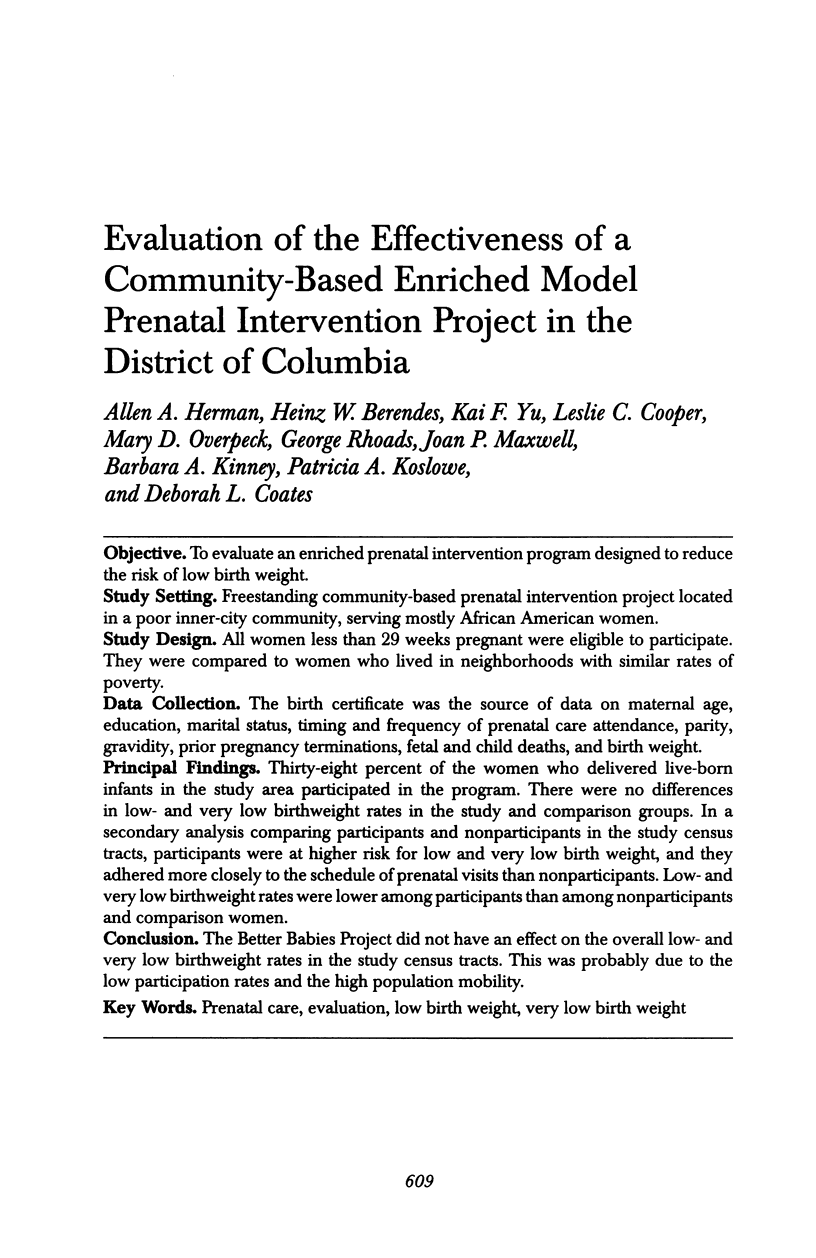
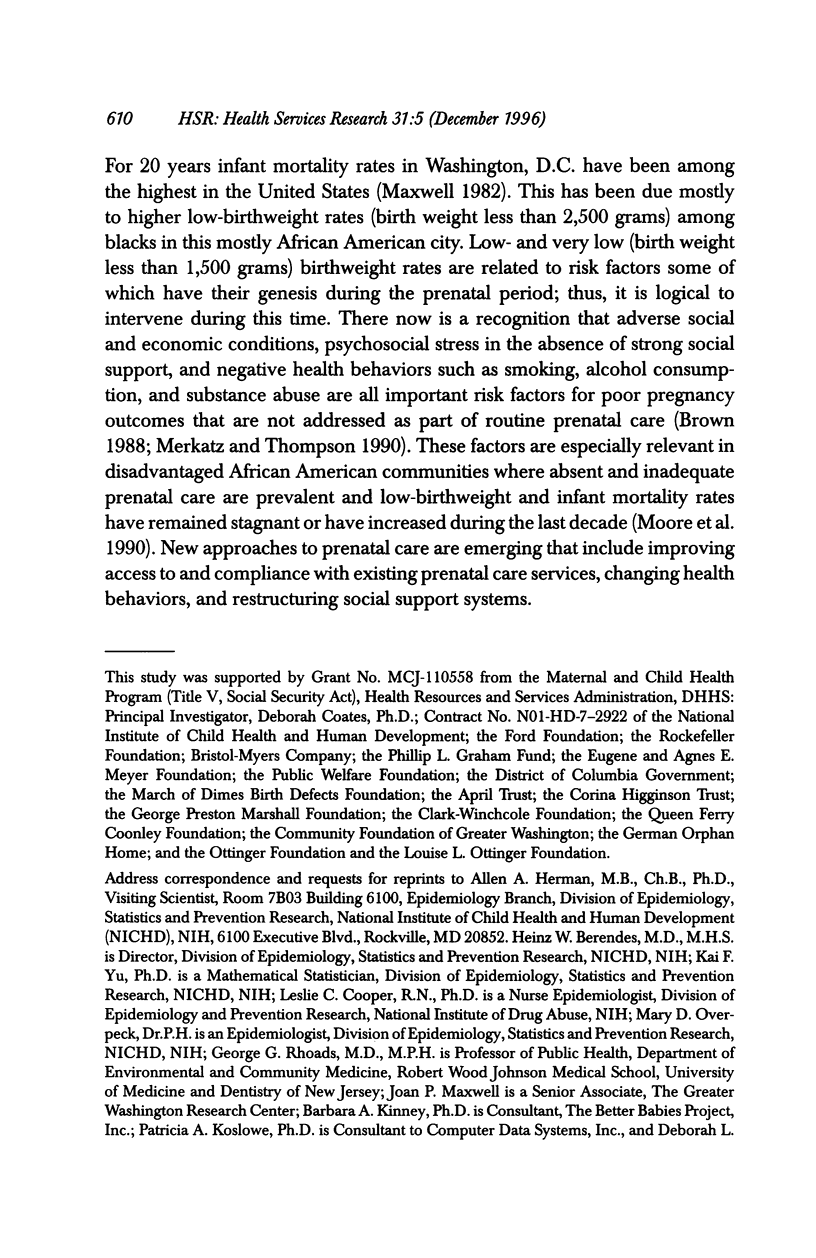
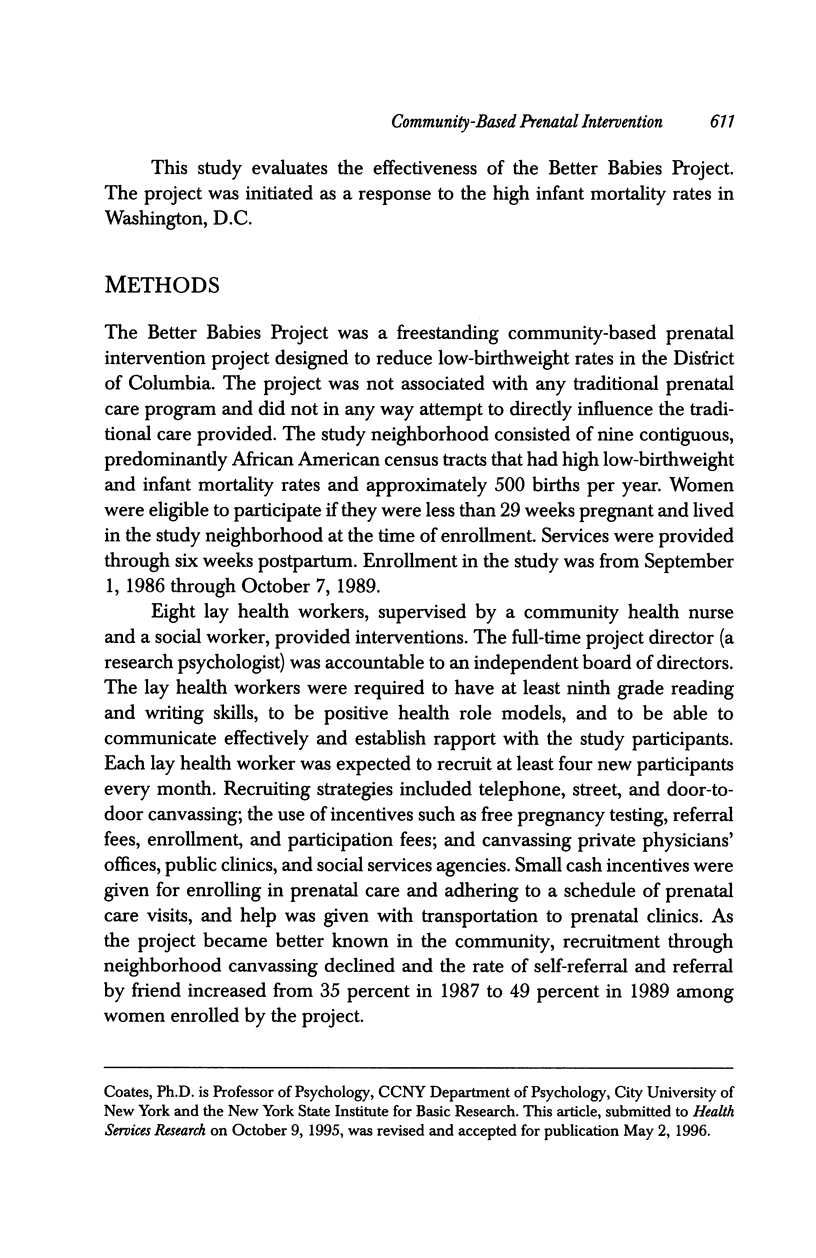
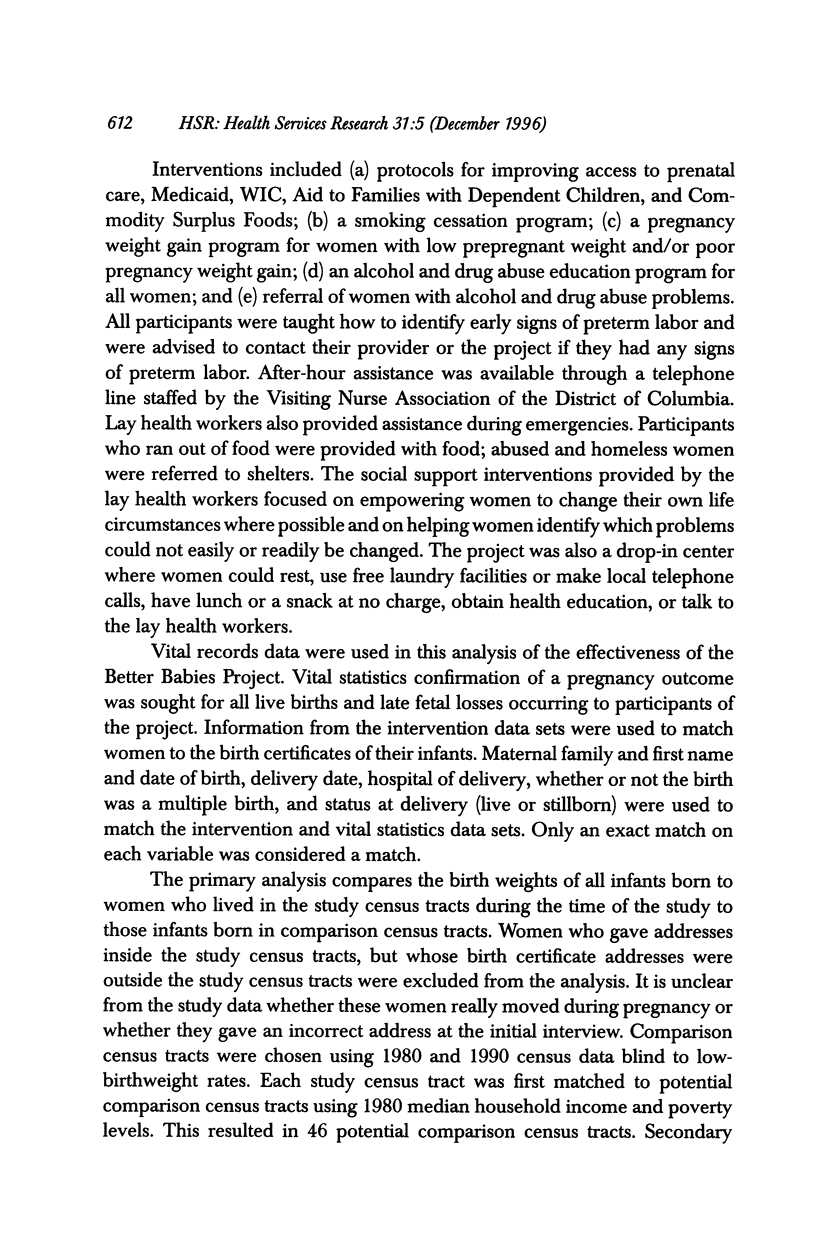
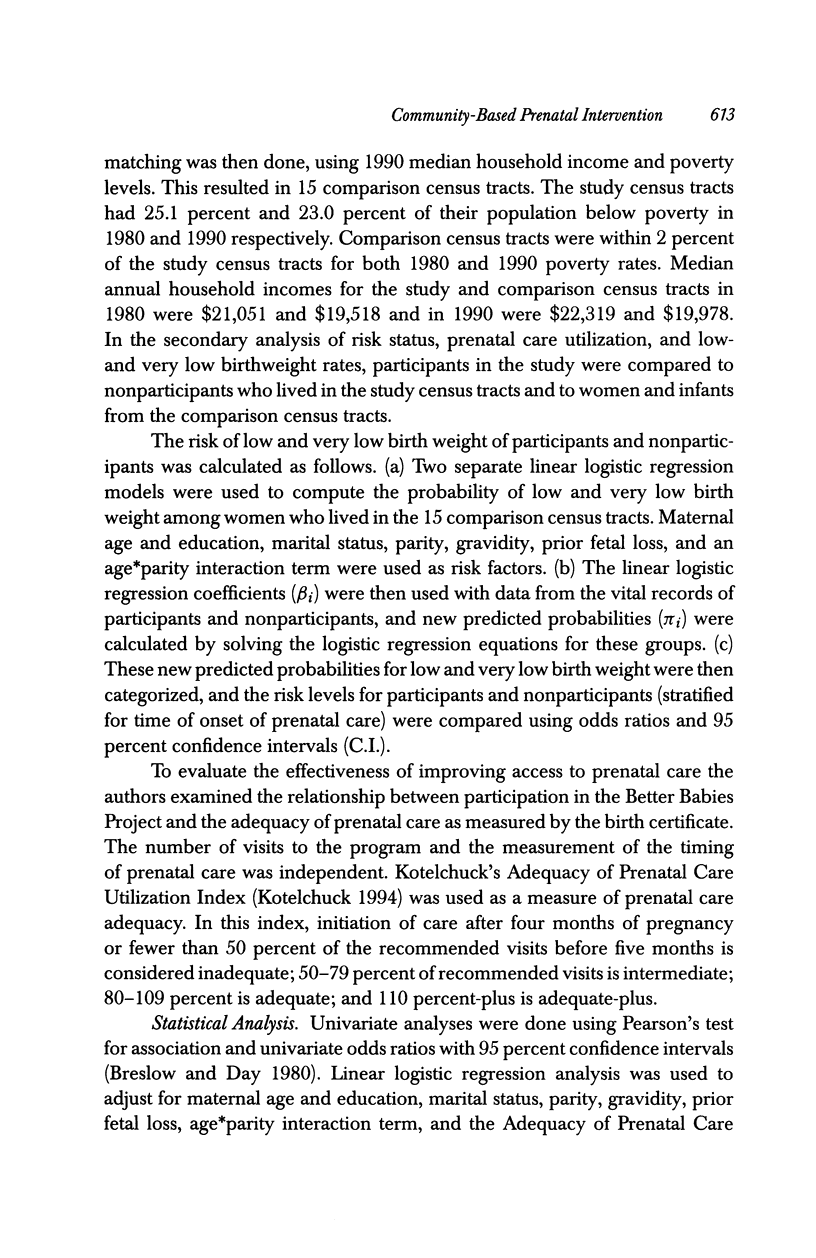
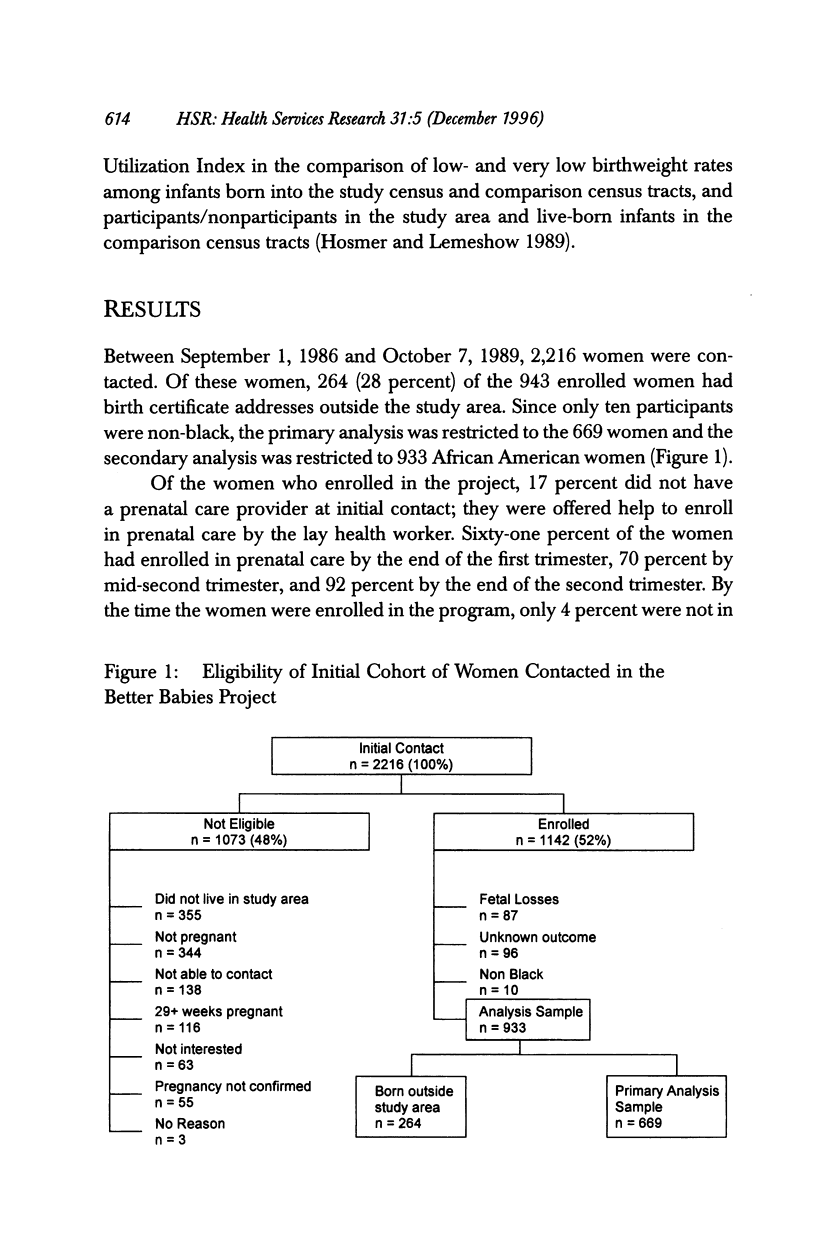
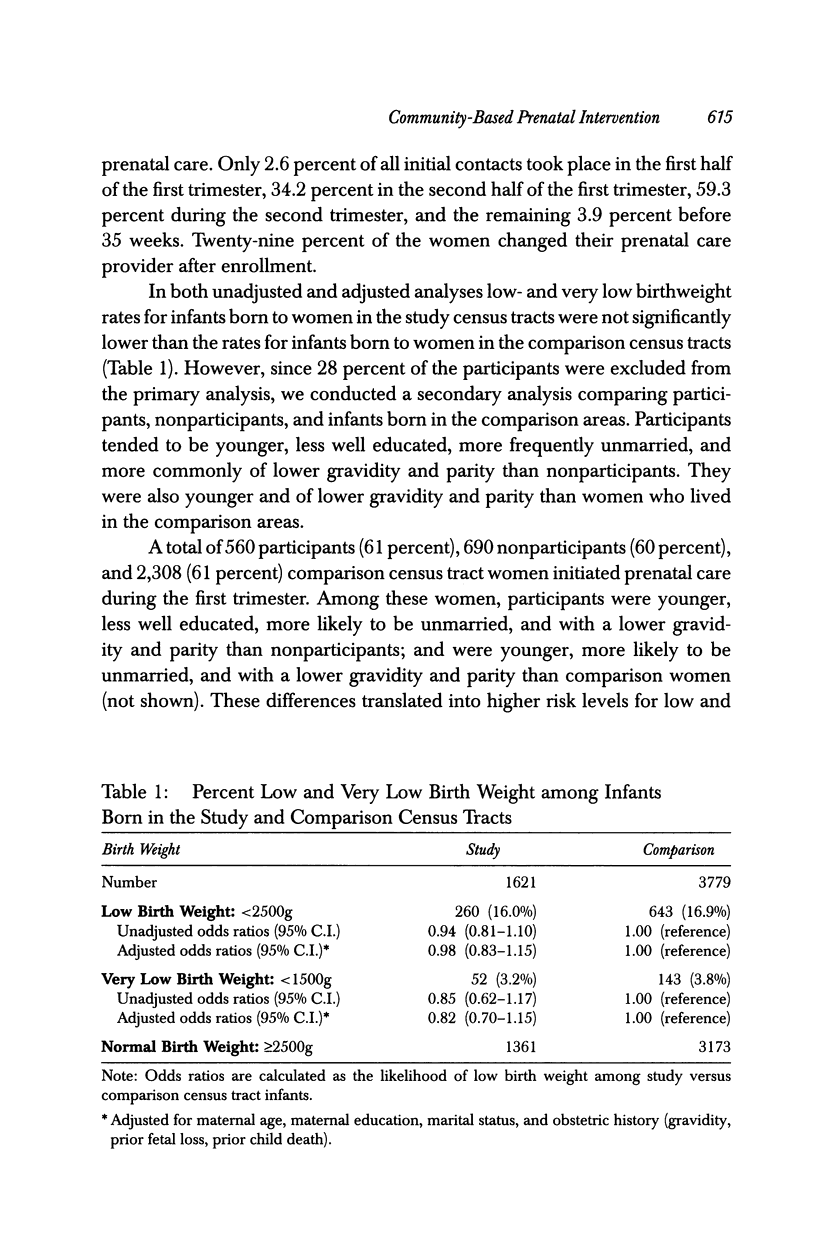
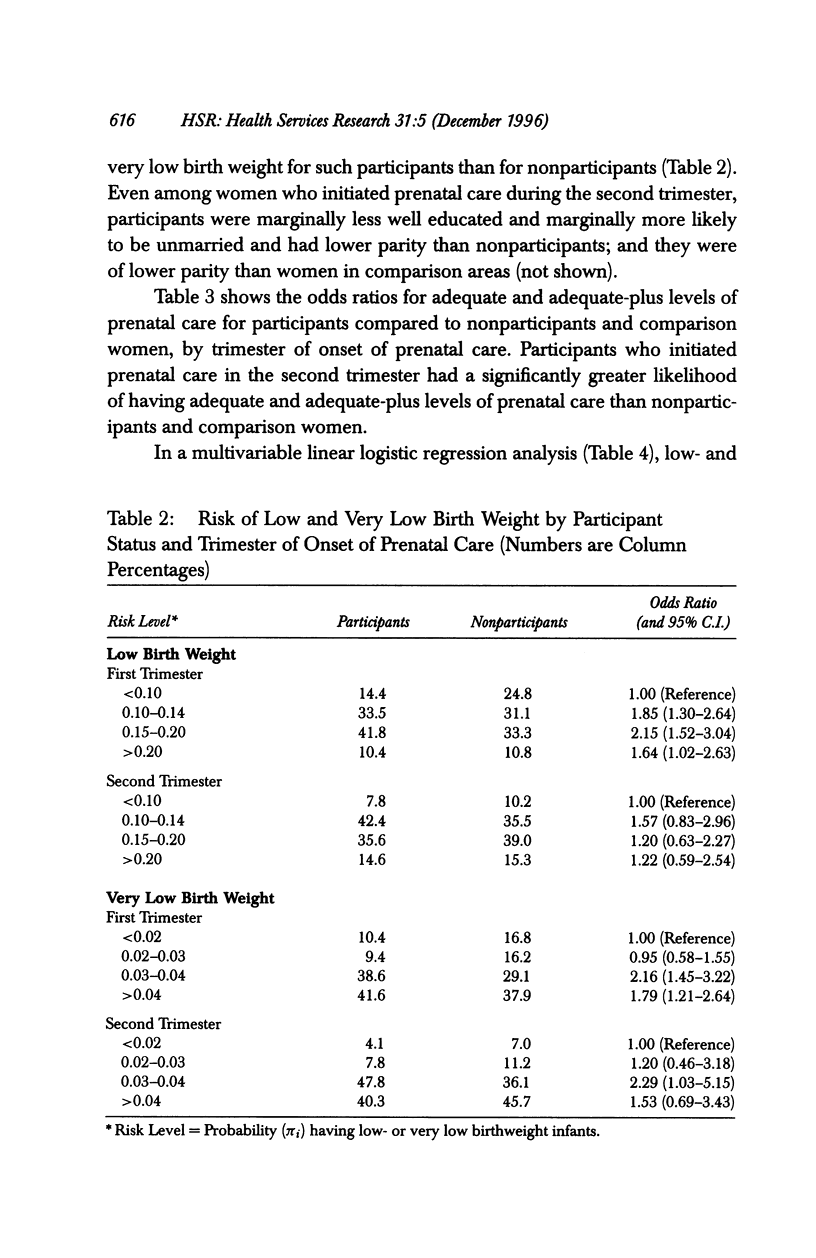
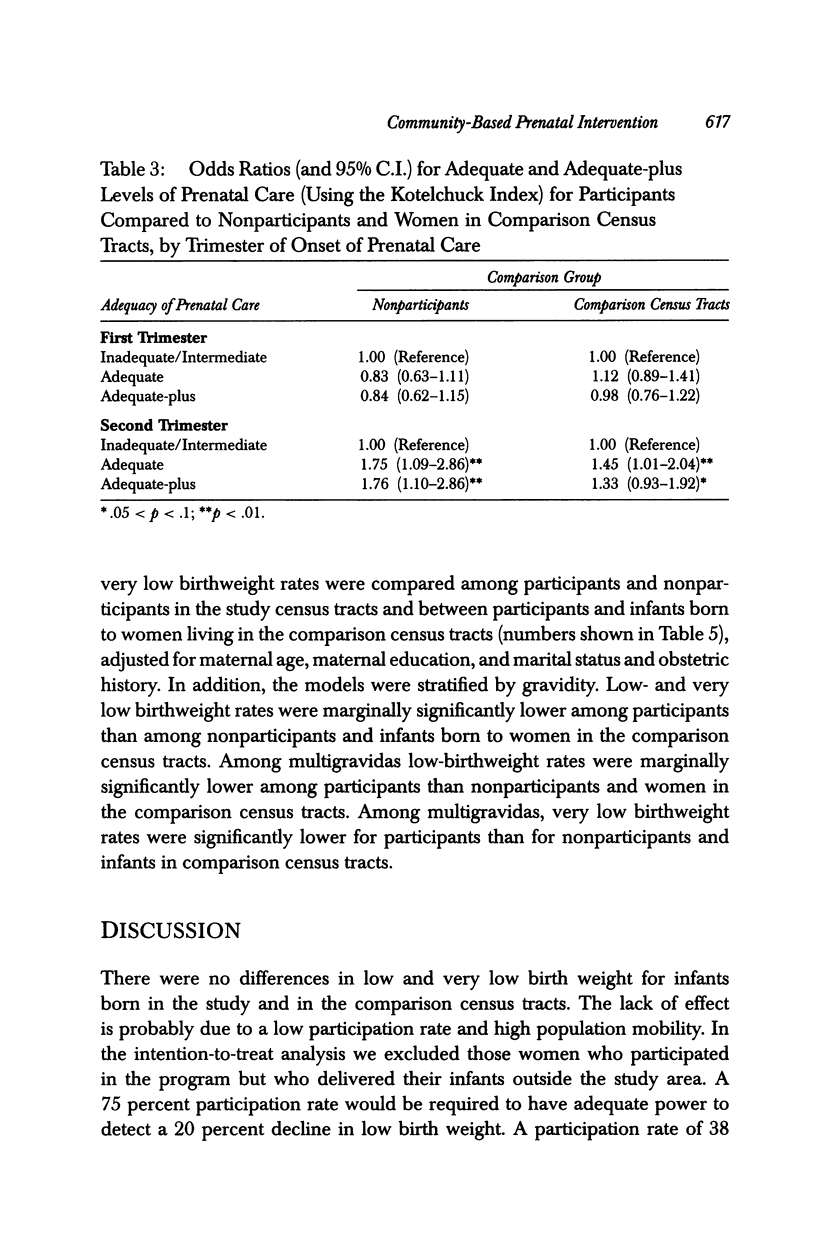
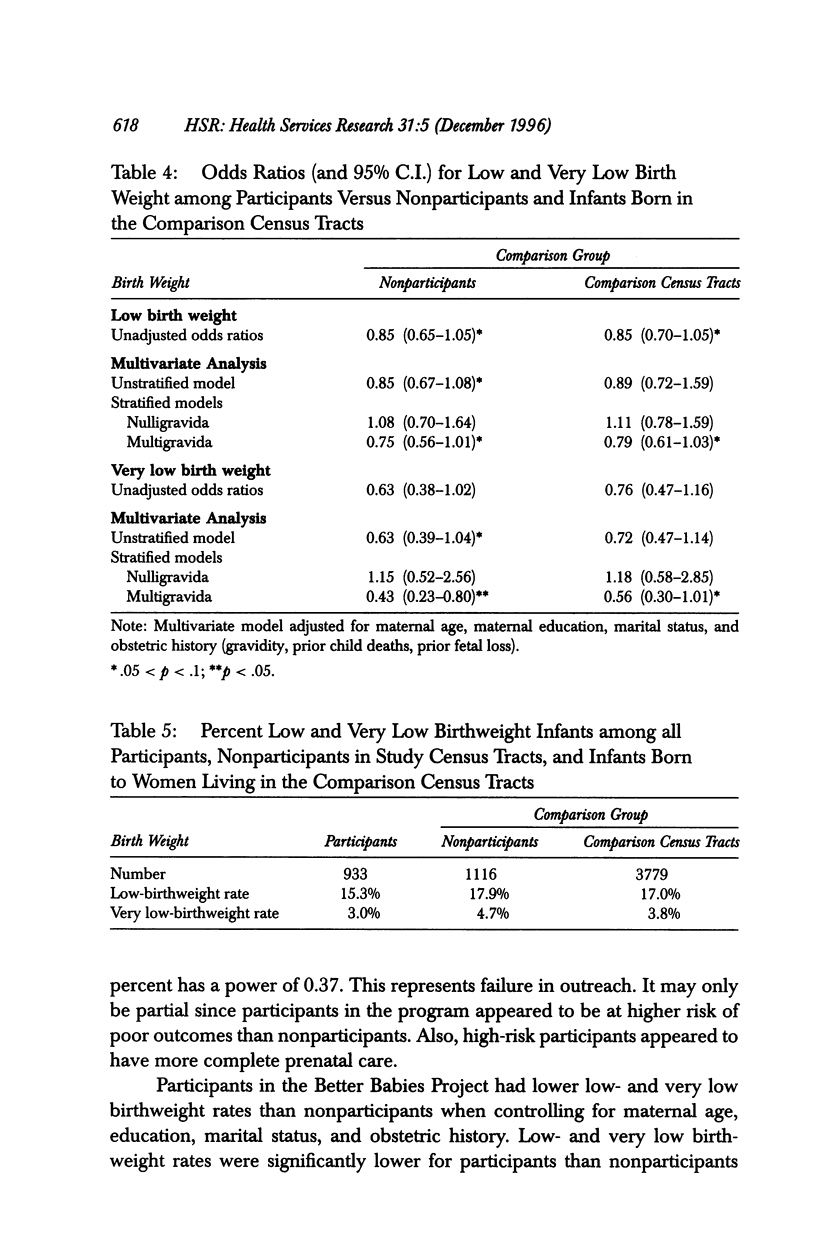
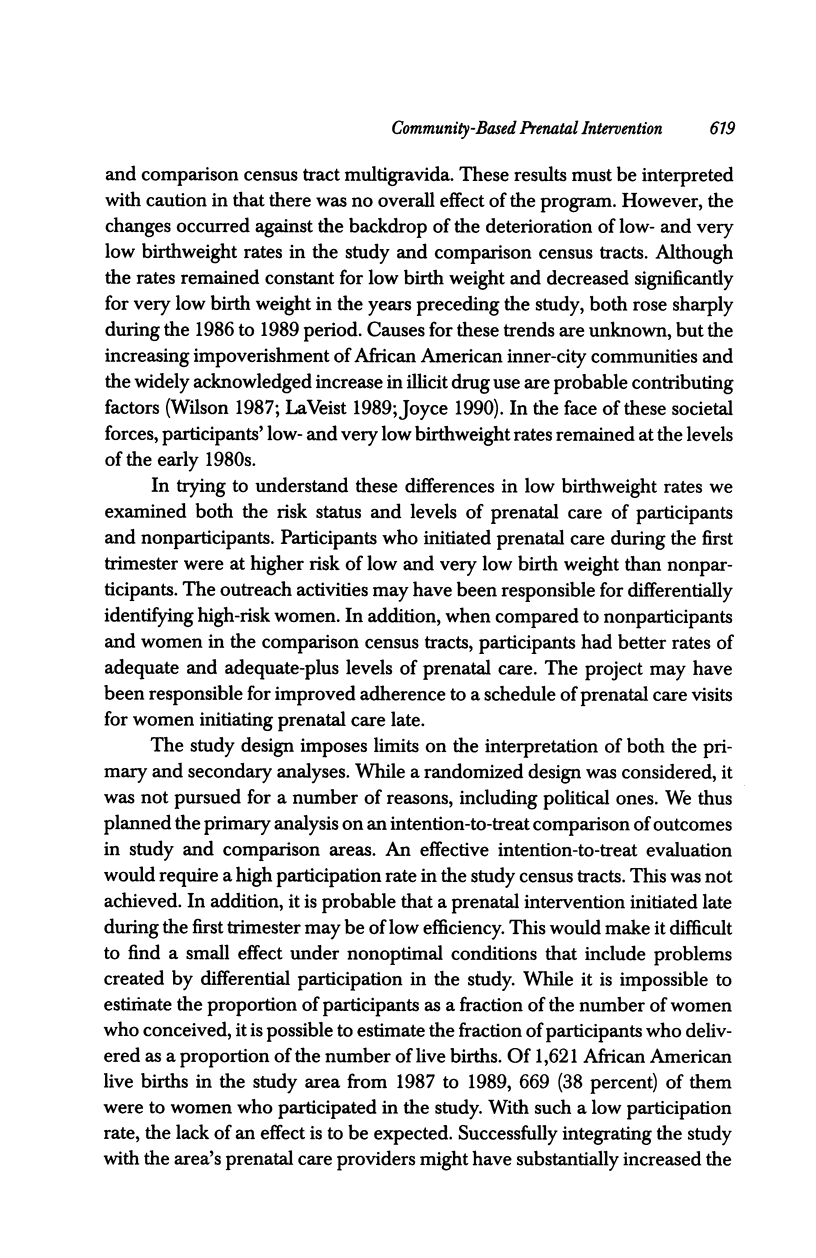
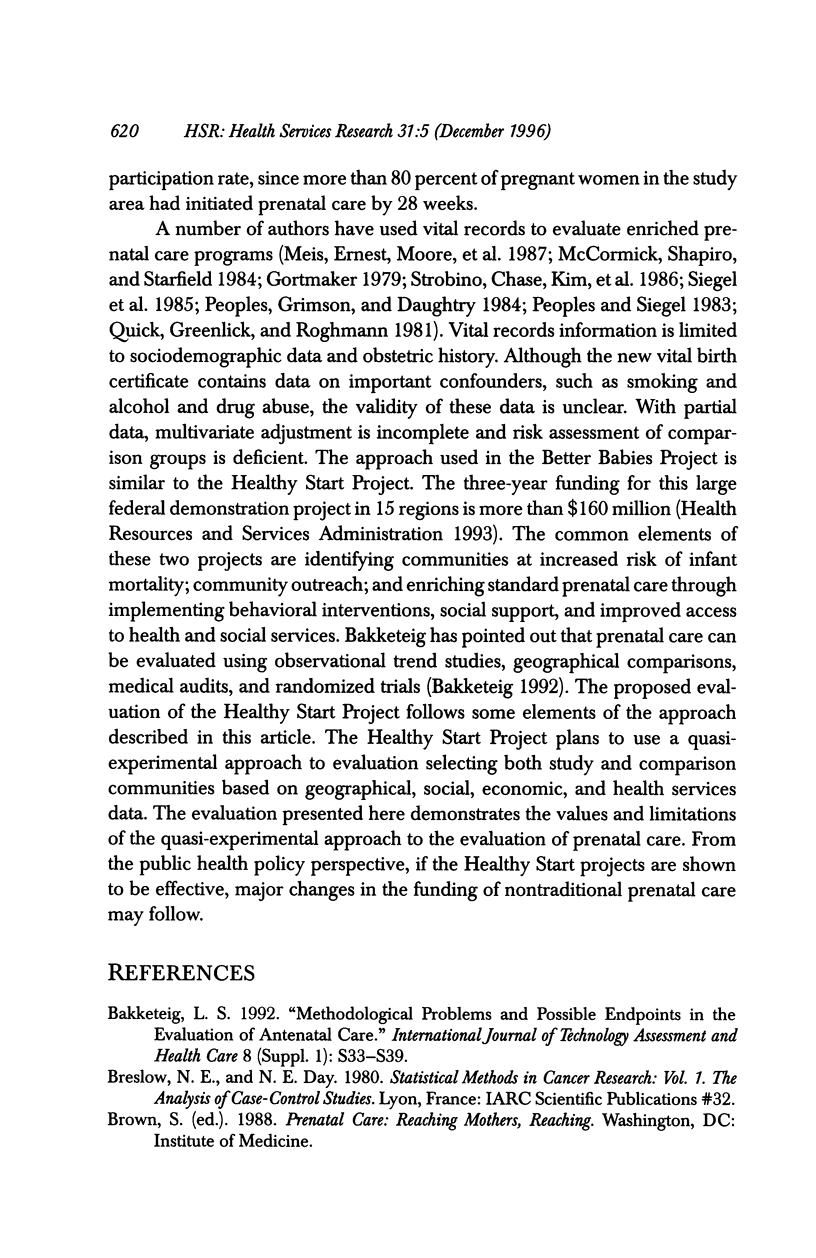
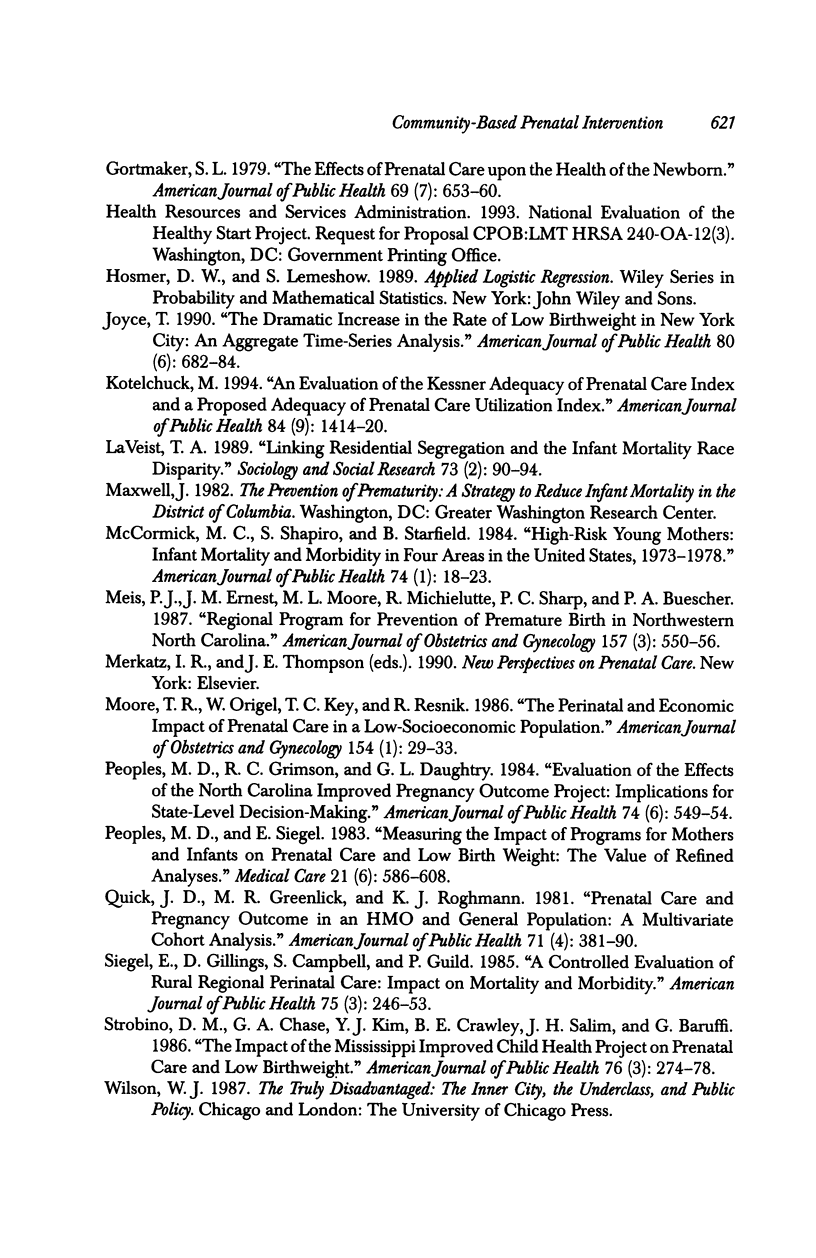
Selected References
These references are in PubMed. This may not be the complete list of references from this article.
- Gortmaker S. L. The effects of prenatal care upon the health of the newborn. Am J Public Health. 1979 Jul;69(7):653–660. doi: 10.2105/ajph.69.7.653. [DOI] [PMC free article] [PubMed] [Google Scholar]
- Joyce T. The dramatic increase in the rate of low birthweight in New York City: an aggregate time-series analysis. Am J Public Health. 1990 Jun;80(6):682–684. doi: 10.2105/ajph.80.6.682. [DOI] [PMC free article] [PubMed] [Google Scholar]
- Kotelchuck M. An evaluation of the Kessner Adequacy of Prenatal Care Index and a proposed Adequacy of Prenatal Care Utilization Index. Am J Public Health. 1994 Sep;84(9):1414–1420. doi: 10.2105/ajph.84.9.1414. [DOI] [PMC free article] [PubMed] [Google Scholar]
- McCormick M. C., Shapiro S., Starfield B. High-risk young mothers: infant mortality and morbidity in four areas in the United States, 1973-1978. Am J Public Health. 1984 Jan;74(1):18–23. doi: 10.2105/ajph.74.1.18. [DOI] [PMC free article] [PubMed] [Google Scholar]
- Meis P. J., Ernest J. M., Moore M. L., Michielutte R., Sharp P. C., Buescher P. A. Regional program for prevention of premature birth in northwestern North Carolina. Am J Obstet Gynecol. 1987 Sep;157(3):550–556. doi: 10.1016/s0002-9378(87)80005-4. [DOI] [PubMed] [Google Scholar]
- Moore T. R., Origel W., Key T. C., Resnik R. The perinatal and economic impact of prenatal care in a low-socioeconomic population. Am J Obstet Gynecol. 1986 Jan;154(1):29–33. doi: 10.1016/0002-9378(86)90387-x. [DOI] [PubMed] [Google Scholar]
- Peoples M. D., Grimson R. C., Daughtry G. L. Evaluation of the effects of the North Carolina Improved Pregnancy Outcome Project: implications for state-level decision-making. Am J Public Health. 1984 Jun;74(6):549–554. doi: 10.2105/ajph.74.6.549. [DOI] [PMC free article] [PubMed] [Google Scholar]
- Peoples M. D., Siegel E. Measuring the impact of programs for mothers and infants on prenatal care and low birth weight: the value of refined analyses. Med Care. 1983 Jun;21(6):586–608. doi: 10.1097/00005650-198306000-00002. [DOI] [PubMed] [Google Scholar]
- Quick J. D., Greenlick M. R., Roghmann K. J. Prenatal care and pregnancy outcome in an HMO and general population: a multivariate cohort analysis. Am J Public Health. 1981 Apr;71(4):381–390. doi: 10.2105/ajph.71.4.381. [DOI] [PMC free article] [PubMed] [Google Scholar]
- Siegel E., Gillings D., Campbell S., Guild P. A controlled evaluation of rural regional perinatal care: impact on mortality and morbidity. Am J Public Health. 1985 Mar;75(3):246–253. doi: 10.2105/ajph.75.3.246. [DOI] [PMC free article] [PubMed] [Google Scholar]
- Strobino D. M., Chase G. A., Kim Y. J., Crawley B. E., Salim J. H., Baruffi G. The impact of the Mississippi Improved Child Health Project on prenatal care and low birthweight. Am J Public Health. 1986 Mar;76(3):274–278. doi: 10.2105/ajph.76.3.274. [DOI] [PMC free article] [PubMed] [Google Scholar]


